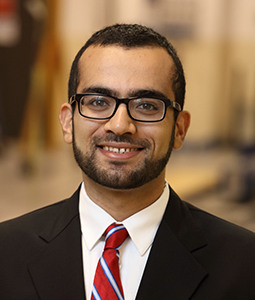Molinaroli College of Engineering and Computing
Faculty and Staff
Ahmed A. Alshareef
| Title: | Assistant Professor, Mechanical Engineering, Biomedical Engineering |
| Department: | Mechanical Engineering, Biomedical Engineering Molinaroli College of Engineering and Computing |
| Email: | [email protected] |
| Office: | Room A111 300 Main |
| Resources: | Google Scholar |

Background
Dr. Alshareef's research interests include injury biomechanics, experimental characterization
of biological tissue, computational biomechanics, and magnetic resonance imaging (MRI).
Prior to joining USC, he was a scientist in the radiology department at the NIH Clinical
Center (2022) after a postdoctoral fellowship at Johns Hopkins University (2019-2021),
where he studied the biomechanics of traumatic brain injury using specialized, non-invasive
MRI techniques.
Dr. Alshareef completed his B.S. at Duke University in biomedical engineering in 2014,
with a focus on biomechanics and tissue engineering. He then received his PhD in BME
at the University of Virginia in 2019, with a dissertation focused on experimental
and computational investigations of brain deformation in humans during head impact.
His lab's current research interests are aimed at using advanced experimental and
computational techniques to measure and model the biomechanics of biological tissue
for injury and disease prevention.
Education
- Ph.D., Biomedical Engineering, University of Virginia, 2014-2019
- B.S., Biomedical Engineering, Duke University, 2010-2014
Awards
Virginia Engineering Foundation Graduate Fellowship - 2018
Anthony Marmarou Award from the National Neurotrauma Society - 2017
Research Overview
Biomechanics plays an important role in understanding, preventing, and healing injury and disease in the human body. A fundamental understanding of the mechanics of biological tissues allows us to employ experimental and computational methods to assess mitigation strategies, as well as tailor patient-specific surgical and therapeutic interventions. Our lab's current research is aimed at:
- Experimental characterization of biological tissue deformation and mechanics
- Multi-physics biomechanics simulations of injury and disease using finite element models
- Biomechanical ‘digital twins’ through patient-specific simulations to inform safety design and clinical decision-making
- Statistical filtering and data-driven reduction methods to supplement sparse data and improve model prediction